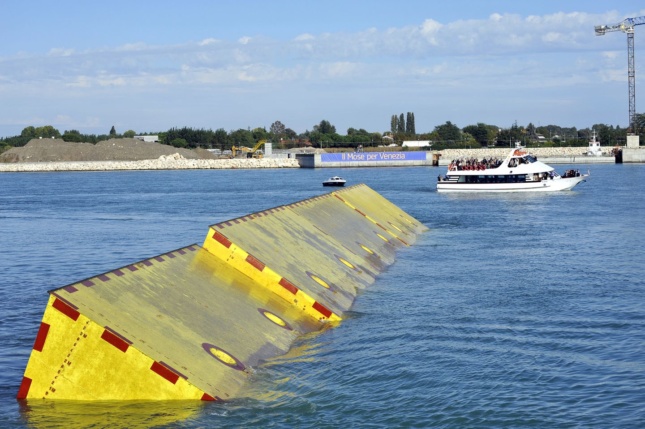For centuries, tourists have flocked to the Italian city of Venice for its fragile beauty and water features. In the last hundred years, however, those elements have become increasingly threatened by rising waters attributable to climate change. After the city was slammed with a flash flood this November, with heights in some areas exceeding six feet, the drive to see the City of Bridges saved from a watery future has been strongly felt the whole world over.
Considering the inundation the city faced, questions have been raised over the status and suitability of MOSE, the 6 billion euro ($6.6 billion) flood barrier project that has been under construction since 2003. MOSE, an Italian acronym for Experimental Electromechanical Module (as well as a reference to Moses, who parted the Red Sea), was originally scheduled to take eight years to complete but was halted in 2014 when taxpayer money was illegally funneled away from the project and the mayor of Venice was arrested on corruption charges. “The delays are an all-Italian shame, and we urgently need a solution,” said Alessandro Morelli, the head of a parliamentary transportation committee.

The main elements of the project already in place are the 78 enormous underwater gates placed between the Adriatic Sea and the Venetian lagoon that would automatically rise during high tide to redirect water away from the city. First prototyped in the 1980s, MOSE is only engineered to temper sea rise levels predicted decades ago, rendering the project already obsolete within the near future even if it were complete. Scientists estimated that if MOSE had been completed in time, however, it would have mitigated a significant amount of damage during the most recent floods.
Luigi D’Alpaos, a professor at the University of Padova, has stated that the project “is obsolete and philosophically wrong, conceptually wrong. MOSE might work tranquilly and without issues for 10 to 20 years. But then problems will arise, and it will be necessary to take other actions.” Though MOSE was designed as a compromise between modest sea-level rise projections and aesthetic discretion, UNESCO has concluded that a scaled-up version of the project would need to be implemented in order to protect the city from excessive flooding. D’Alpaos and other members of the local preservation community have offered longer-term solutions, one of which includes raising the terrain of the city via an injection of seawater underneath the bedrock. No matter what, the way the debates over the solution for Venice unfolds, whether MOSE is completed or scrapped in favor of any number of alternatives, will undoubtedly become a bellwether for other areas around the world affected by rising sea levels.











